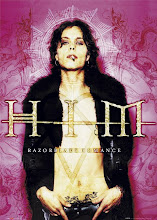Pasión por la Moda
En Inglaterra es un icono de la moda. Con su toque de excentricismo, Zandra Rhodes ha vestido a Diana de Gales y a Freddie Mercury. Hoy sus retos son diseñar vestuarios para óperas y conservar su originalidad.
Zandra Rhodes es una diseñadora británica de moda quien ha estado creando atuendos para personas ricas y famosas durante los últimos 40 años. Entre sus clientes se encuentran dos iconos como; la princesa Diana y Freddie Mercury, aunque ella admite que este último fue una experiencia amena “antes de que Freddie adaptara su apariencia de los Village People!”
Con su reluciente cabello rosa, exótico maquillaje y su ropa excéntrica, Rhodes tiene una apariencia realmente extravagante. No es sorpresa que sus creaciones estuvieran a la vanguardia del movimiento punk a finales de los 70s, cuando ella diseñaba telas rotas y usaba joyería de broches y cadenas. Y aun con el acentuado contraste, en los últimos años ha diseñado para la opera.
Cuando Zandra conoció la revista Speak Up le preguntamos qué pensaba acerca de la situación actual de la moda en Inglaterra:
Zandra Rhodes (Acento Británico): Pienso que es una pregunta bastante tendenciosa porque cada diferente área del mundo tiene sus altibajos a veces momentos buenos o malos. Me refiero a que el Reino Unido es un país de muchas ideas, por lo tanto somos afortunados cuando nuestras ideas son usadas de manera comercial; pero generalmente, lo que pasa es que cualquier cosa fuera de este país realmente no llega a ser tan comercial. A menos que se vaya a París o Milán, por ejemplo, como dice Paul Smith: las tiendas se abren en cualquier lugar, como estrategia para que después se extiendan en todo el mundo; pero de hecho, en algo como la moda, si realmente no se muestra en Paris o Milan –y a veces en Nueva York- no es notada. Aunque en Nueva York es mas como un estilo, no como un nuevo diseño. Pienso que la moda debe ser mostrada en aquellos lugares clave o no será notada del todo.
DI y Yo
La conversación después se torno en el trabajo de la finada princesa Diana:
Zandra Rhodes: Le hice cerca de cinco o seis vestuarios, de los cuales uno de ellos fue el rosa del cuento de hadas que ella vistió en Japón, de esos sin hombreras con puntos, y muy delicado. El otro fue uno más como un traje normal; pero de hecho fue gracioso cuando en la exhibición de Christine, Suzy Menkes del Herald Tribune se acercó a mi y me dijo: “Sabes Zandra tu moda se destaca desde aquí y no luces como alguien más” ellos no fueron muy conservadores que digamos, el vestuario fue solo un típico vestido de cuento de hadas de Zandra Rhodes que ella tuvo en una ocasión especial.
De la pasarela a la Opera…
Zandra Rhodes, quien describe su raiz familiar de “clase-trabajadora”, no solo diseña ropa para la pasarela. El año pasado diseñó tanto el escenario como los trajes para la producción de la opera de San Diego Les Pecheurs de Perles (Los pescadores de perla) de George Bizet. Ella también diseñó trajes exuberantes para la opera de Huston Grand y producciones de la Opera Nacional Inglesa de Aida por Giuseppe Verdi. Rhodes es la fundadora de la Moda y el museo Textil en Londres. El llamativo amarillo y rosa edificio se abrió en mayo del 2003. El museo es el actual anfitrión de una exhibición que muestra una nueva oleada de moda sueca y diseñadores de joyería titulada Explorando una nueva identidad.


